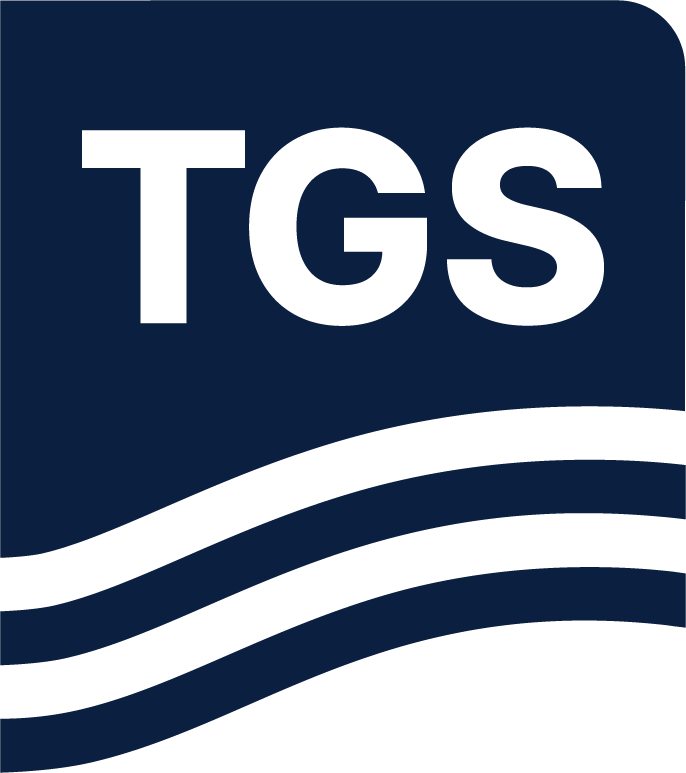Nearer, Denser, Longer - The Barents Sea Solution
An innovative acquisition configuration combined with advanced imaging technologies to address the Barents Sea challenges.
An innovative acquisition configuration combined with advanced imaging technologies to address the Barents Sea challenges.

The Location
Location
Hammerfest Basin, Barents Sea
Survey Year
2018
Survey Type
3D GeoStreamer
Streamer Configuration
uHD3D, 16 x 56.25 m spread, 7 and 10 km streamers
Source Configuration
Triple source
Survey Size
4 172 sq. km
The Barents Sea is one of the remaining frontier exploration areas on the Norwegian Continental Shelf (NCS). According to the Norwegian Petroleum Directorate (NPD) the Barents Sea accounts for around half of the undiscovered resources on the NCS. This area is considered highly prospective at several target depths, which makes GeoStreamer broadband technology uniquely suitable. A new ultra high-density 3D dataset (orange outline) adds to existing 2D and 3D seismic and EM data coverage in the area.

The Challenge
The Challenge
The south-western Barents Sea is characterized by a complex geological regime, with a heterogeneous overburden and different target depths (arrows). The combination of relatively shallow water depths and a hard, rugose sea floor, creates a tremendous amount of noise. This complicates using reflections in FWI for velocity updates. A key challenge in producing an accurate image of the subsurface is creating a reliable velocity model. Refraction based FWI has become the standard tool for velocity model building in the Barents Sea. However, due to the lack of recorded long offsets, model depths have been limited. Identifying porous carbonate buildups and sands has previously been difficult on legacy seismic data.
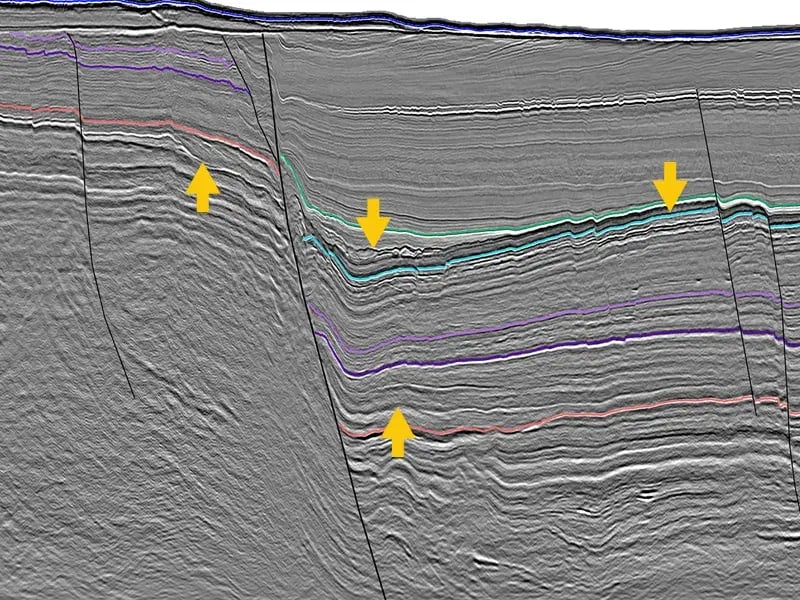

The Solution
Data
High Density GeoStreamer 3D
Ultra Efficient
Improved near offsets
Dense bin size
6.25 m x 9.375 m
Velocity Model Building
FWI using additional long offsets
Increased Model Depth
From 2.5 km to 4 km
Imaging
Up to 200 Hz
In 2018 TGS utilized a novel acquisition setup for acquiring an ultra-high-density 3D seismic dataset in the Barents Sea, covering parts of the Hammerfest Basin and Finnmark Platform. In addition to 16 densely spaced streamers, three streamers were extended from 7 km to 10 km length, allowing the recording of deeper diving waves (refractions) and therefore enabling FWI to produce velocity updates to greater depths.
Diving Deeper with FWI from 10 km Streamers
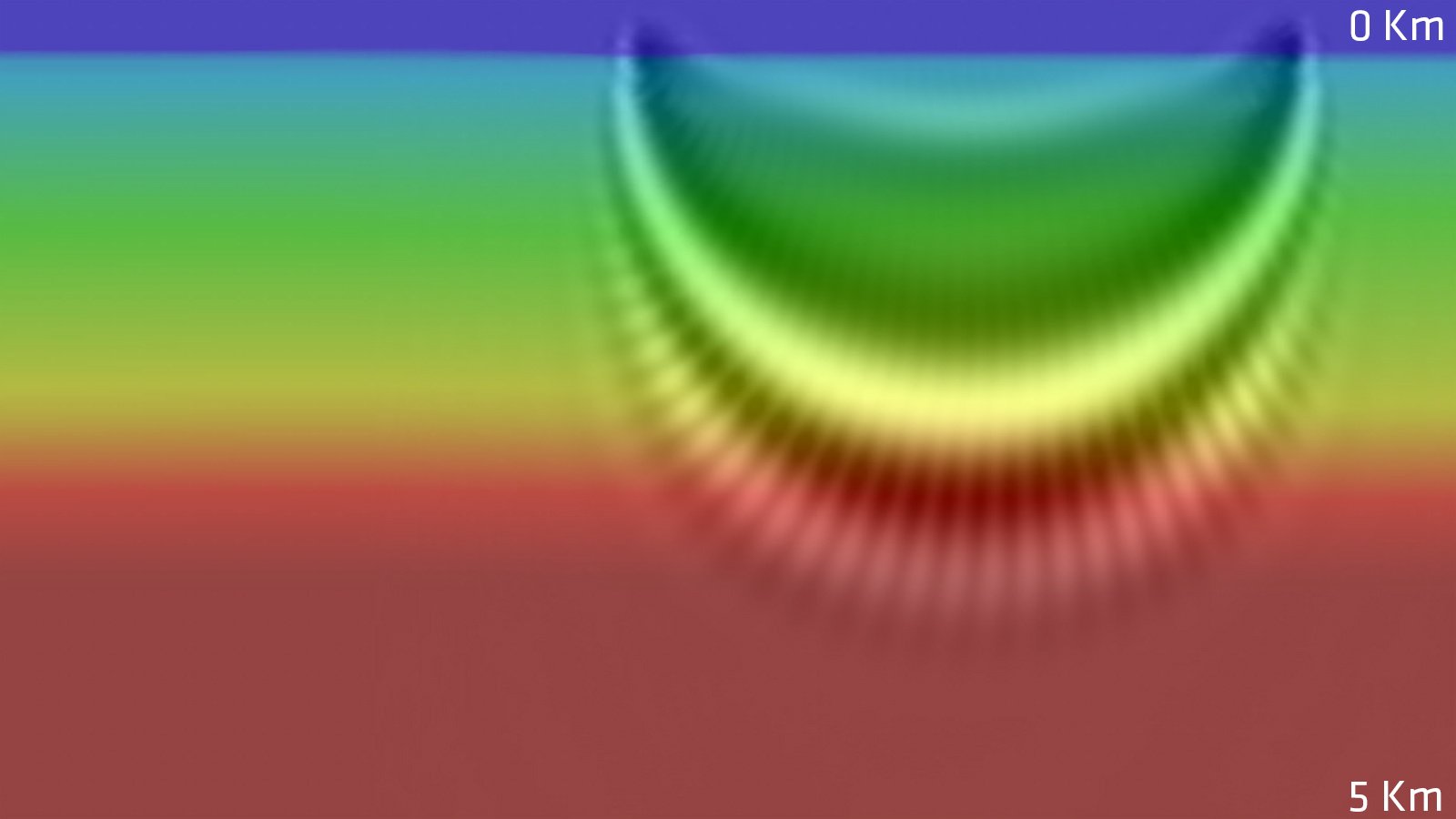
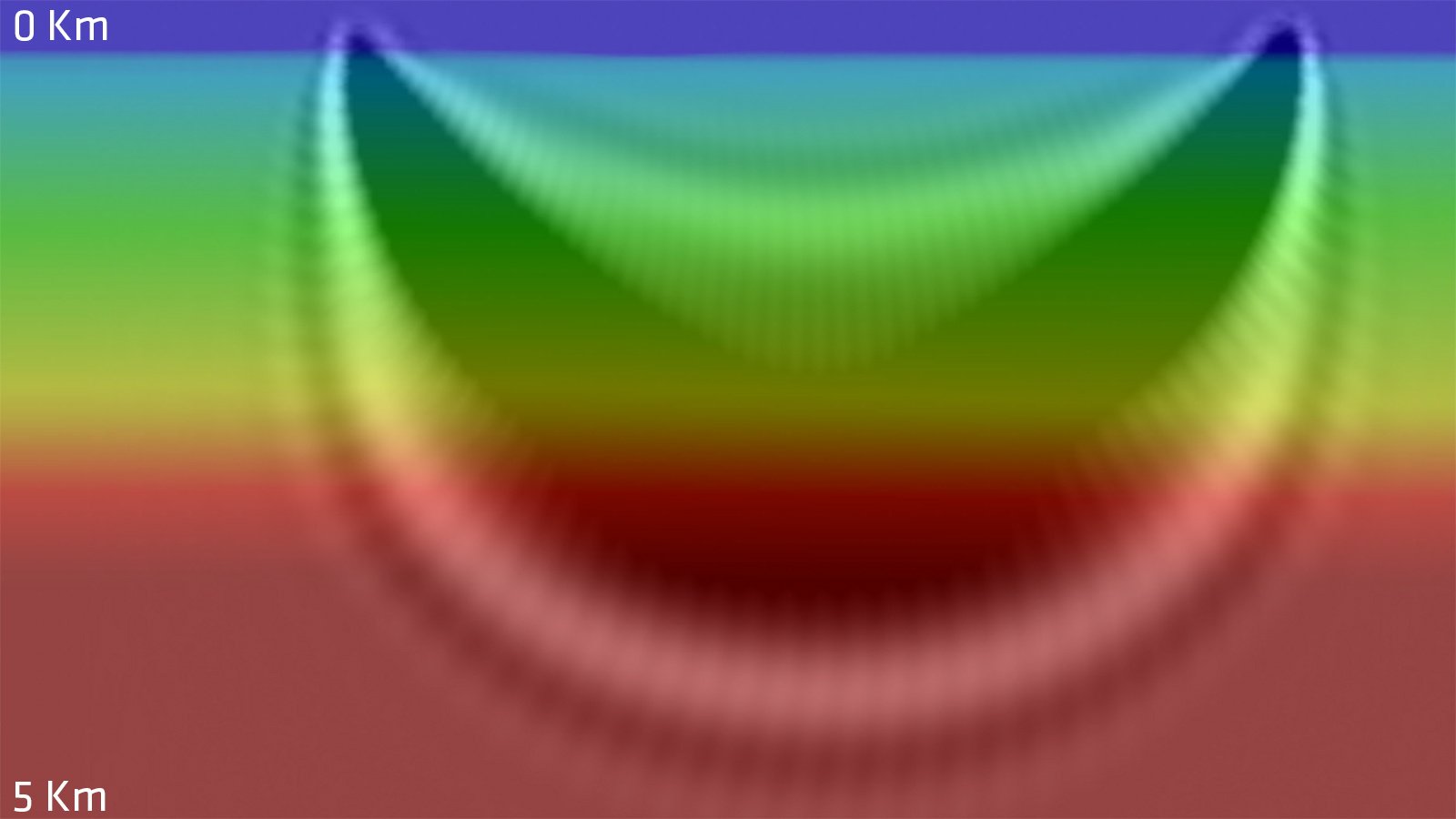

The Results
Configuration Developed to Resolve the Challenges of the Barents Sea
This acquisition configuration was developed to enable the best solution to resolve the challenges of the Barents Sea. Thanks to the additional long offset streamers and therefore increased model depth, detailed attribute maps can be extracted for both shallow and deep target horizons. The velocity contrasts captured in the depth velocity model allow accurate imaging of the subsurface without being biased by distortion effects caused by the shallow heterogeneous overburden. The velocities derived from FWI include valuable information for reservoir characterization where low velocities can be an indication for porous sands, karstified carbonates, hydrocarbons or high porosity areas in general.
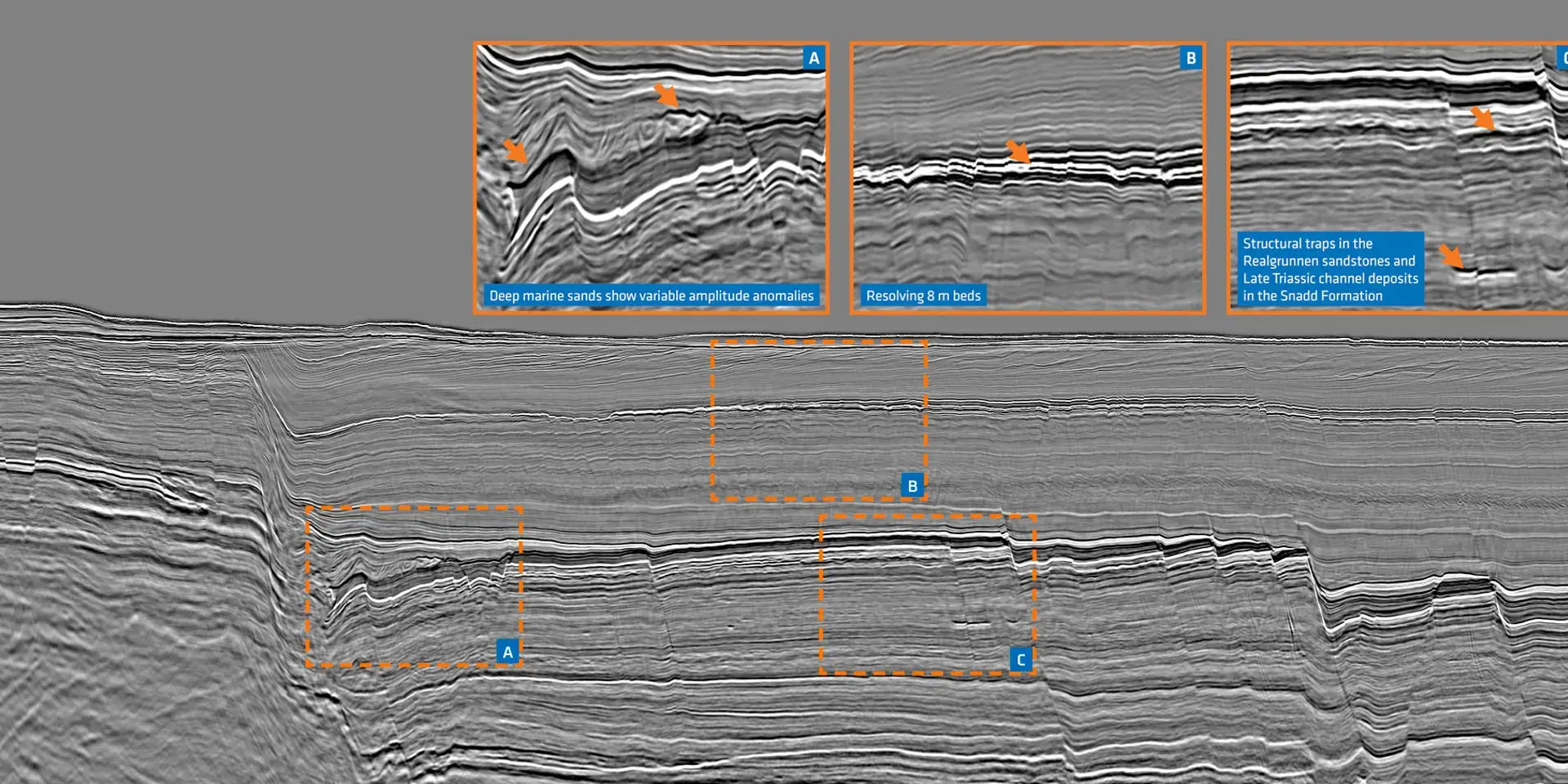
FWI Captures Reservoir and Shallow Gas Cloud Goliat Field
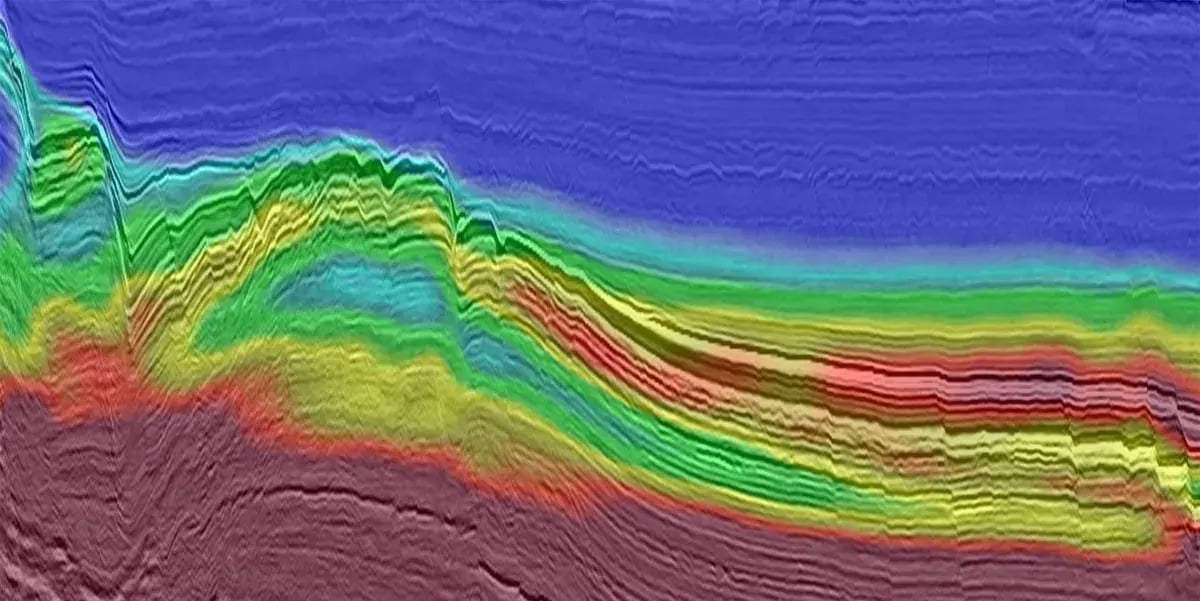
Fast track KPSTM stack with FWI velocity overlay through the Goliat reservoir. At the reservoir level, the model shows a clear low velocity anomaly, potentially indicating a porous and hydrocarbon filled sand body.
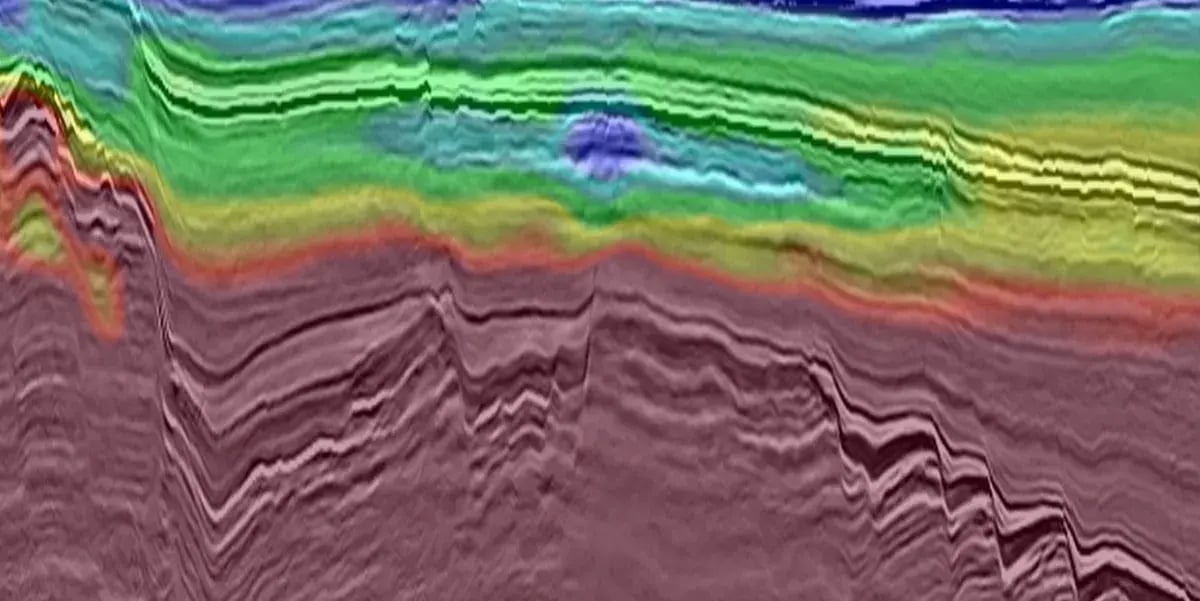
Gas from the reservoir has leaked upwards via a complex series of faults and accumulated higher in the section. FWI resolves this shallow gas cloud effectively highlighting a potential shallow hazard in the area.
Correlation Between Velocity and Amplitude Indicates Hydrocarbon Accumulations



FWI velocity model overlaid on a KPSDM stack. Both amplitude and velocity anomalies correlate well and therefore this can be an indication of hydrocarbon accumulations at the structural highs.
Speak to Our Experts
Get in touch with a TGS representative today to book your demo and learn more about how TGS solutions can support your energy needs.
